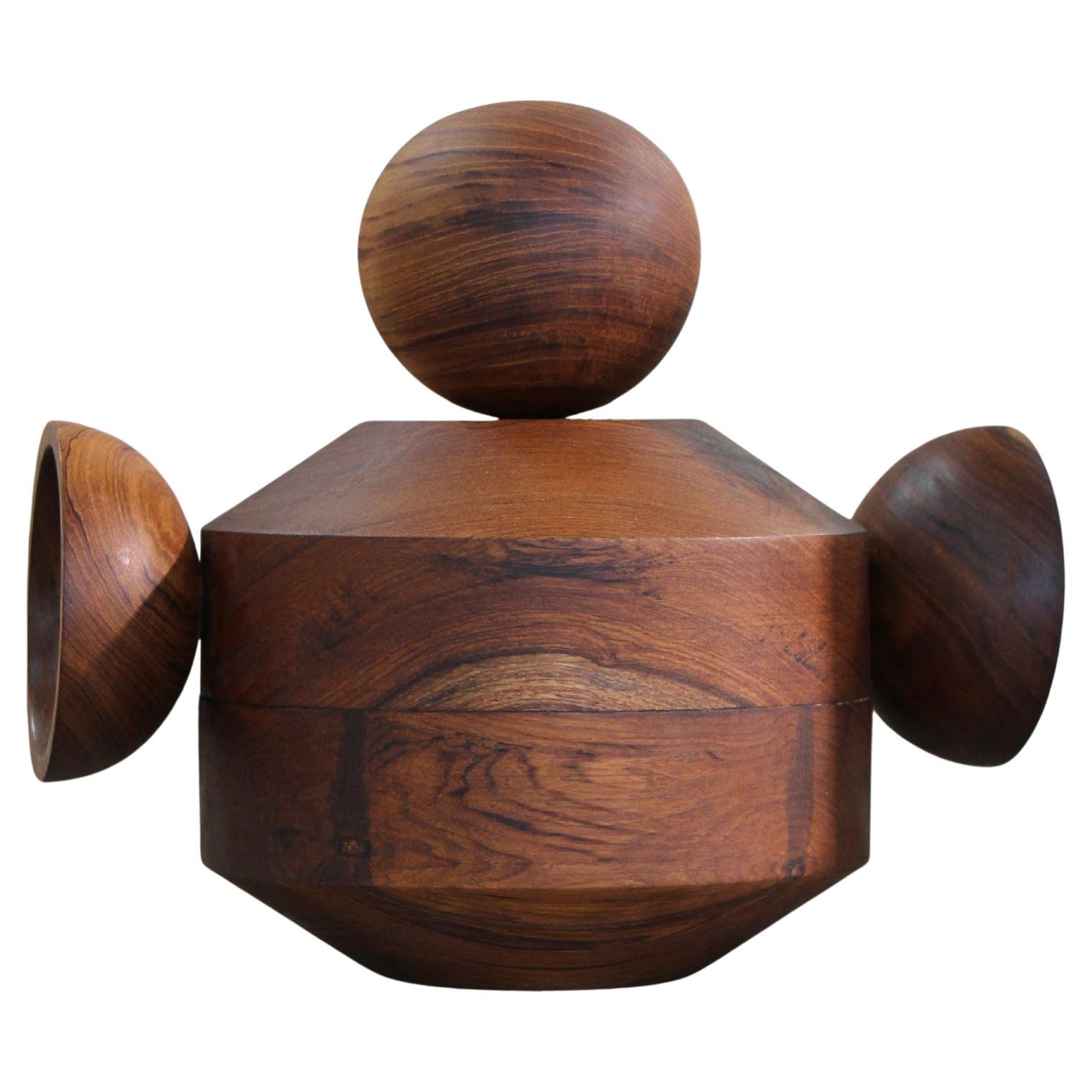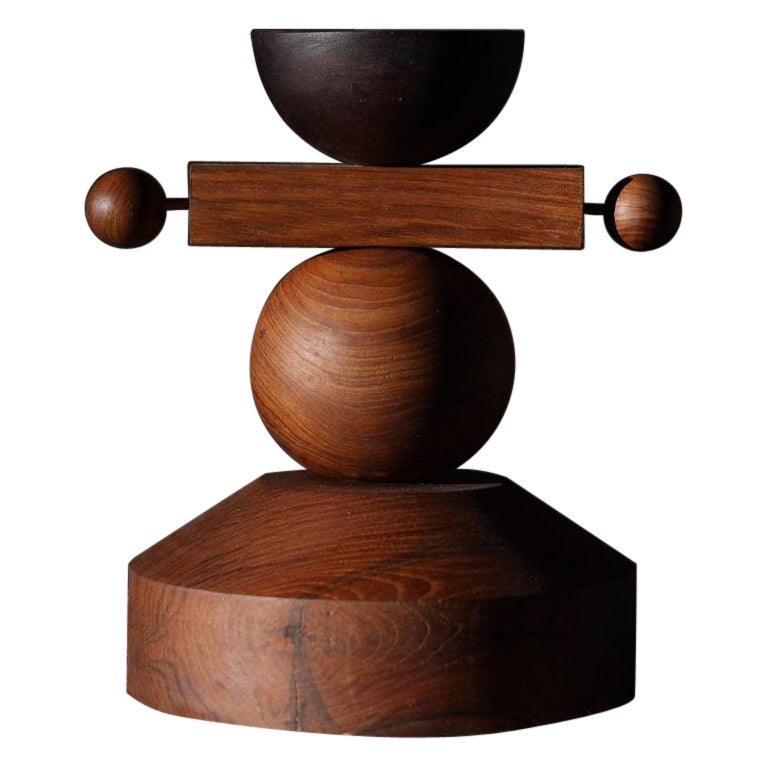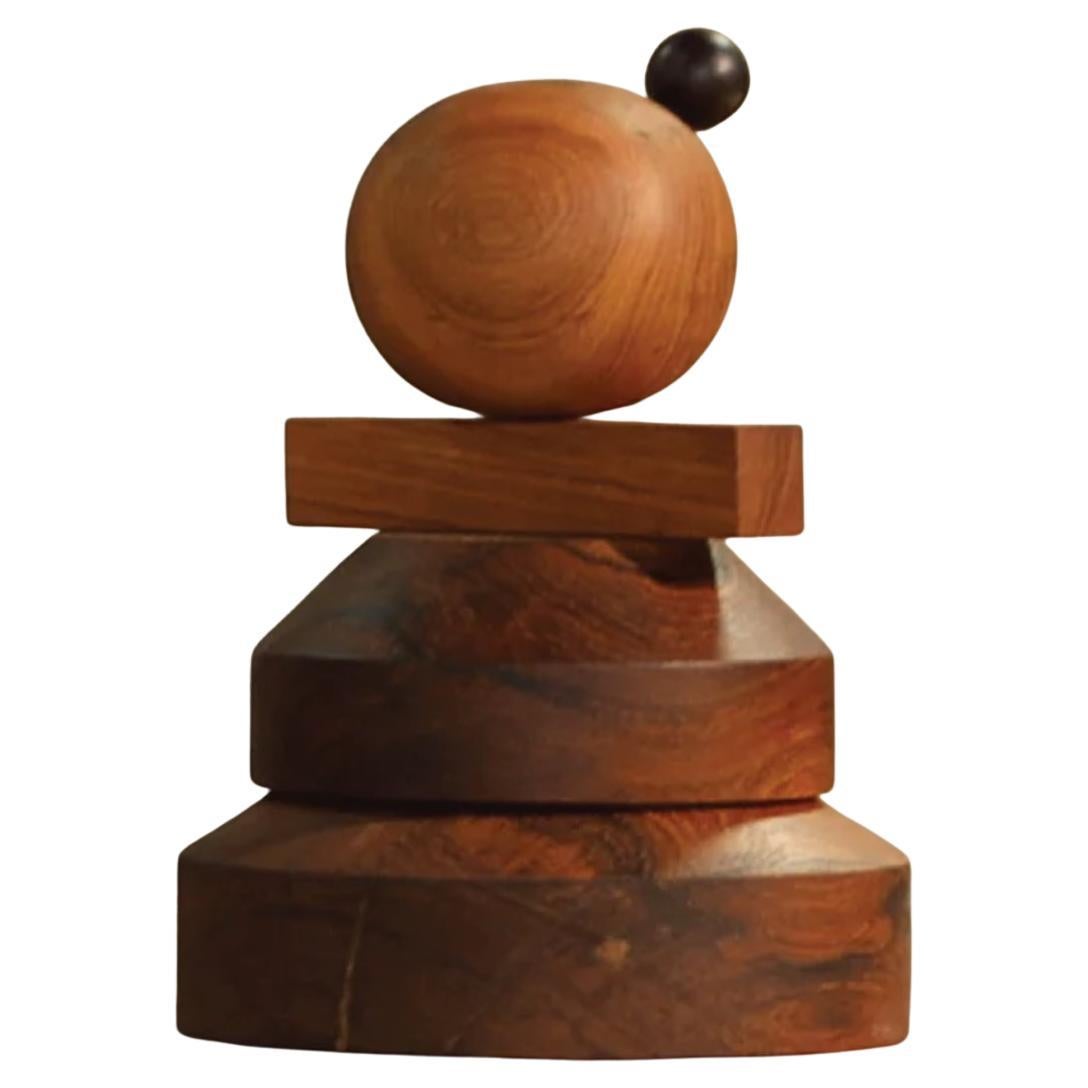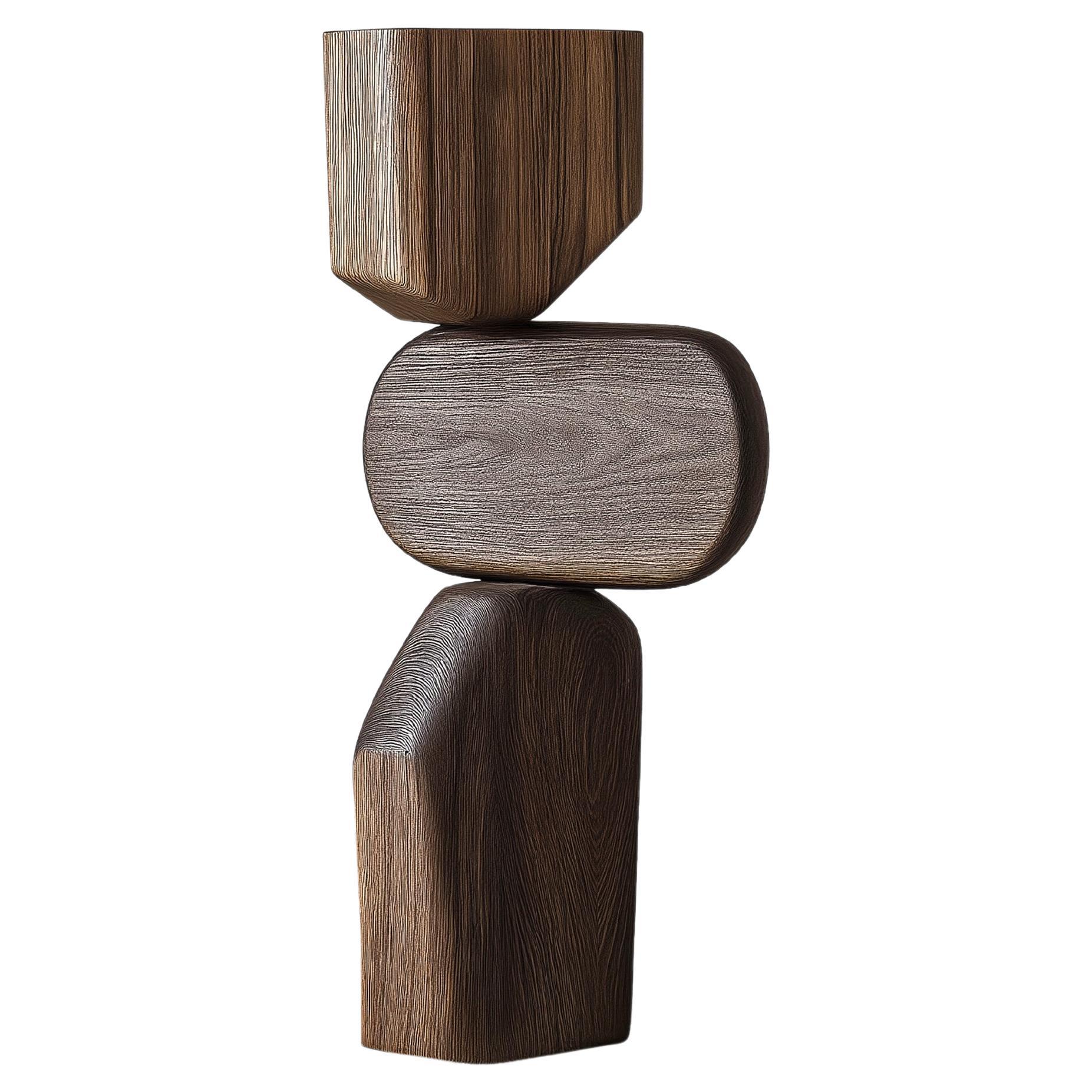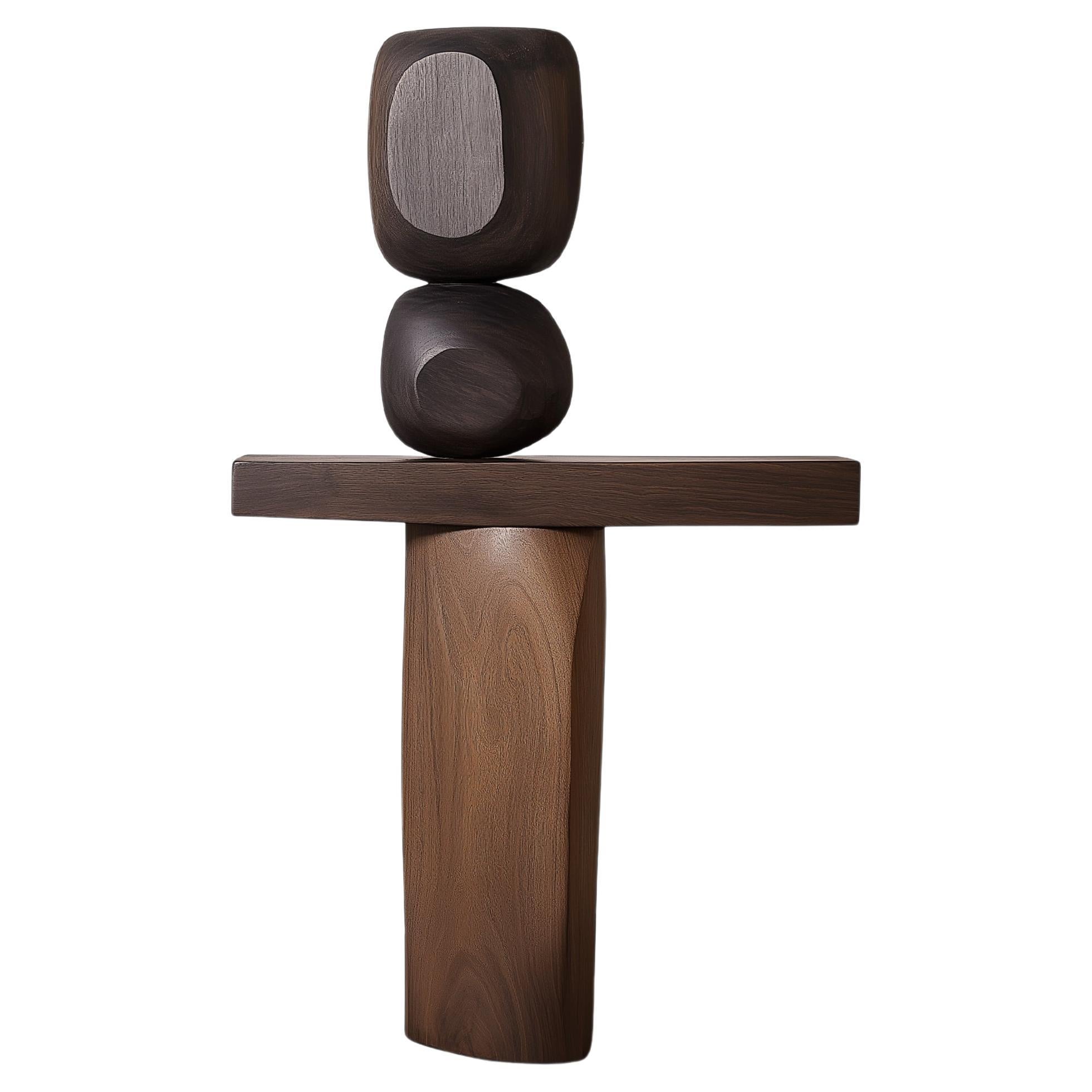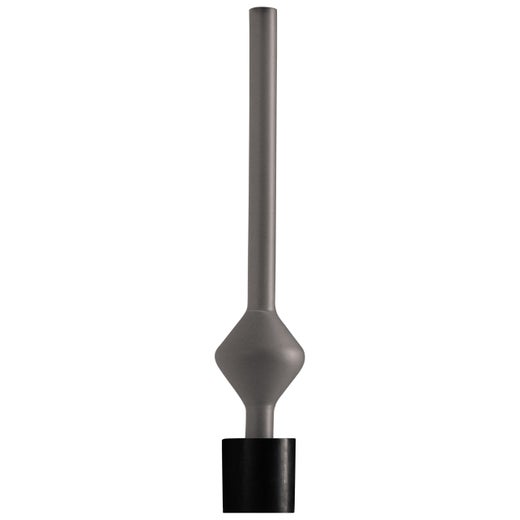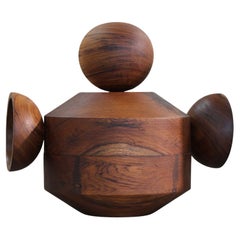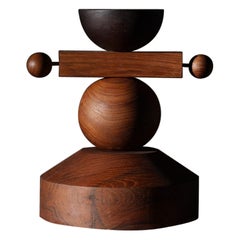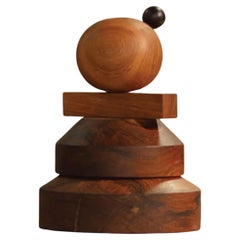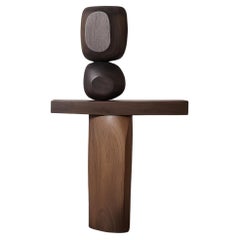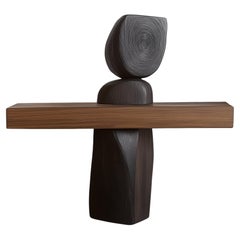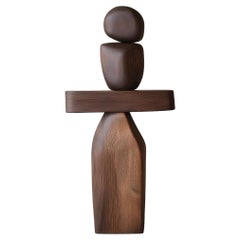Items Similar to Shibui 16 Sculpture by WANAS
Want more images or videos?
Request additional images or videos from the seller
1 of 7
Shibui 16 Sculpture by WANAS
$1,162.05per item
£873.33per item
€980per item
CA$1,627.40per item
A$1,784.76per item
CHF 924.38per item
MX$21,445.24per item
NOK 11,640.12per item
SEK 10,924.59per item
DKK 7,467.94per item
Quantity
About the Item
Shibui 16 Sculpture by WANAS
Dimensions: D 28 x W 28 x H 36 cm.
Materials: Brass, rosewood, teak wood, and wood.
The size is customisable on request. Please contact us.
Why is it that the simplest of things manage to stay with us for such an
extended period of time? There is beauty in stillness, and there is beauty in a humdrum existence.
Shibui collection is a portrait in the landscape of the exquisite ineffable and
the unseen. Let it fold and unfold within you. It is an assemblage of sixteen sculptural forms, each a marriage of the same shapes in different dynamics.
It’s an invitation to explore, from us to you. WANAS (We Are Now A Store), founded in 2022, is a design dossier where possibilities are limitless and
material explorations find a home. All of the objects and more are created, designed, sampled, and composed by the often-overlooked spontaneity.
We’re innately a visual design studio where we experiment with the architecture of simple shapes and forms. Spontaneity, perspective, play, and infinite but diverse scalability find us at the heart of what we do.
Geographically, we’re nestled in the landscapes of India, where the crafts of the artisans give spirit to the WANAS objects.
We have traversed from the eastern tip to the west, and our objects have found home in different intersections of the longitudes & the latitudes.
Swim through our objects and take a peek at our thoughts.
- Dimensions:Height: 14.18 in (36 cm)Width: 11.03 in (28 cm)Depth: 11.03 in (28 cm)
- Style:Post-Modern (Of the Period)
- Materials and Techniques:
- Place of Origin:
- Period:
- Date of Manufacture:2025
- Production Type:New & Custom(Current Production)
- Estimated Production Time:7-8 weeks
- Condition:
- Seller Location:Geneve, CH
- Reference Number:1stDibs: LU1219244673292
Galerie Philia
Galerie Philia is an international contemporary sculptural design and art gallery representing emerging and established designers and artists. The gallery is the brainchild of two brothers who share a lifetime passion for art, literature and philosophy. Their distinct academic background sets them apart from their peers, as it sees them following a rhizomatic and transcultural approach in the way they select works. This involves combining elements from multiple cultures in what becomes a network of harmoniously interconnected roots, ultimately revealing the beauty of each unique creation. The gallery’s non-hierarchical curation sits apart from the ephemerality of trends and focuses instead on the true aesthetic quality of the piece – alluring and timeless. Unlike others, Galerie Philia does not focus on a single style – whether minimalist, organic or raw – but rather embraces heterogeneity. The Galerie Philia takes pride in discovering new talents, providing them with multiple international platforms to showcase their latest creations. As well as propelling the newest generation of 21st century collectible design, Galerie Philia also works with internationally known design artists. Galerie Philia has a strong international presence, with galleries in Geneva, New York and Singapore. In addition to their permanent spaces, the gallery organizes temporary group exhibitions and artists residencies in first-class locations around the world.
Made to order creations can be done: please contact us for any request.
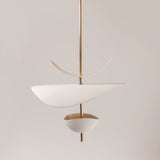
About the Seller
5.0
Recognized Seller
These prestigious sellers are industry leaders and represent the highest echelon for item quality and design.
Diamond Seller
Premium sellers with a 4.7+ rating and 24-hour response times
Established in 2015
1stDibs seller since 2015
5,090 sales on 1stDibs
Typical response time: <1 hour
- ShippingRetrieving quote...Shipping from: Surat, India
- Return Policy
Authenticity Guarantee
In the unlikely event there’s an issue with an item’s authenticity, contact us within 1 year for a full refund. DetailsMoney-Back Guarantee
If your item is not as described, is damaged in transit, or does not arrive, contact us within 7 days for a full refund. Details24-Hour Cancellation
You have a 24-hour grace period in which to reconsider your purchase, with no questions asked.Vetted Professional Sellers
Our world-class sellers must adhere to strict standards for service and quality, maintaining the integrity of our listings.Price-Match Guarantee
If you find that a seller listed the same item for a lower price elsewhere, we’ll match it.Trusted Global Delivery
Our best-in-class carrier network provides specialized shipping options worldwide, including custom delivery.More From This Seller
View AllShibui 10 Sculpture by WANAS
Located in Geneve, CH
Shibui 10 Sculpture by WANAS
Dimensions: D 28 x W 28 x H 38 cm.
Materials: Brass, rosewood, teak wood, and wood.
The size is customisable on request. Please contact us.
Why is it t...
Category
2010s Indian Post-Modern Abstract Sculptures
Materials
Brass
$1,067 / item
Shibui 08 Sculpture by WANAS
Located in Geneve, CH
Shibui 08 Sculpture by WANAS
Dimensions: D 20 x W 24 x H 26 cm.
Materials: Brass, rosewood, teak wood, and wood.
The size is customisable on request. Please contact us.
Why is it t...
Category
2010s Indian Post-Modern Abstract Sculptures
Materials
Brass
$2,086 / item
Shibui 03 Sculpture by WANAS
Located in Geneve, CH
Shibui 03 Sculpture by WANAS
Dimensions: D 28 x W 28 x H 38 cm.
Materials: Brass and wood.
The size is customisable on request. Please contact us.
Why is it that the simplest of th...
Category
2010s Indian Post-Modern Abstract Sculptures
Materials
Brass
$1,138 / item
Shibui 12 Sculpture by WANAS
Located in Geneve, CH
Shibui 12 Sculpture by WANAS
Dimensions: D 33 x W 33 x H 40 cm.
Materials: Brass and wood.
The size is customisable on request. Please contact us.
Why is it that the simplest of th...
Category
2010s Indian Post-Modern Abstract Sculptures
Materials
Brass
$1,162 / item
Jubokko Sculpture by Chandler McLellan
Located in Geneve, CH
Jubokko Sculpture by Chandler McLellan
Limited Edition of 8 Pieces.
Dimensions: D 10.2 x W 20.3 x H 34.4 cm.
Materials: Hard maple and walnut.
Sculptures will be signed and numbere...
Category
2010s American Modern Figurative Sculptures
Materials
Maple, Walnut
$1,826 / item
Petite Sculpture by Chandler McLellan
Located in Geneve, CH
Petite Sculpture by Chandler McLellan
Dimensions: D 7.5 x W 10.2 x H 30.5 cm.
Materials: Walnut.
Sculptures will be signed and numbered on the bottom of the base. Wood grain will v...
Category
2010s American Modern Figurative Sculptures
Materials
Walnut
$877 / item
You May Also Like
Abstract Form Sculpture Lull No35 – NONO’s Decorative Art Piece for Modern Inter
By Joel Escalona
Located in Ciudad de México, CDMX
Abstract Form Sculpture Lull No35 – NONO’s Decorative Art Piece for Modern Interiors
———
Balance and tension are at the core of these sculptures. The interplay between the smooth, r...
Category
2010s Mexican Mid-Century Modern Abstract Sculptures
Materials
Hardwood
Sculptural Accent Lull No107 – Handcrafted Wooden Sculpture by NONO
By Joel Escalona
Located in Ciudad de México, CDMX
Sculptural Accent Lull No107 – Handcrafted Wooden Sculpture by NONO
———
Balance and tension are at the core of these sculptures. The interplay between the smooth, rounded forms and...
Category
2010s Mexican Modern Abstract Sculptures
Materials
Hardwood
Sculptural Accent Lull No115 – Handcrafted by NONO for Contemporary Homes
By Joel Escalona
Located in Ciudad de México, CDMX
Sculptural Accent Lull No115 – Handcrafted by NONO for Contemporary Homes
———
Balance and tension are at the core of these sculptures. The interplay between the smooth, rounded for...
Category
2010s Mexican Modern Abstract Sculptures
Materials
Hardwood
Handcrafted Wooden Sculpture Lull No111 – Contemporary Art by NONO
By Joel Escalona
Located in Ciudad de México, CDMX
Handcrafted Wooden Sculpture Lull No111 – Contemporary Art by NONO
———
Balance and tension are at the core of these sculptures. The interplay between the smooth, rounded forms and ...
Category
2010s Mexican Modern Abstract Sculptures
Materials
Hardwood
Luxury Decor Wooden Sculpture Lull No127 – Handcrafted by NONO
By Joel Escalona
Located in Ciudad de México, CDMX
Luxury Decor Wooden Sculpture Lull No127 – Handcrafted by NONO
———
Balance and tension are at the core of these sculptures. The interplay between the smooth, rounded forms and solid,...
Category
2010s Mexican Modern Abstract Sculptures
Materials
Hardwood
$12,833 Sale Price / item
20% Off
Contemporary Wooden Sculpture Lull No113 – NONO’s Decorative Object for Modern I
By Joel Escalona
Located in Ciudad de México, CDMX
Contemporary Wooden Sculpture Lull No113 – NONO’s Decorative Object for Modern Interiors
———
Balance and tension are at the core of these sculptures. The interplay between the smoo...
Category
2010s Mexican Modern Abstract Sculptures
Materials
Hardwood
Read More
Galerie Philia Unveils Limited-Edition Designs at Giampiero Tagliaferri’s New L.A. Studio
For the exhibition “Materia Perpetua,” the gallery asked an international group of makers — including Tagliaferri — to explore the possibilities of a surprisingly versatile material: onyx.
Galerie Philia Doesn’t Just Discover Fresh Design Talent — It Grows It
With an impressive slate of international exhibitions, the Geneva-based gallery raises the profiles of emerging designers.
